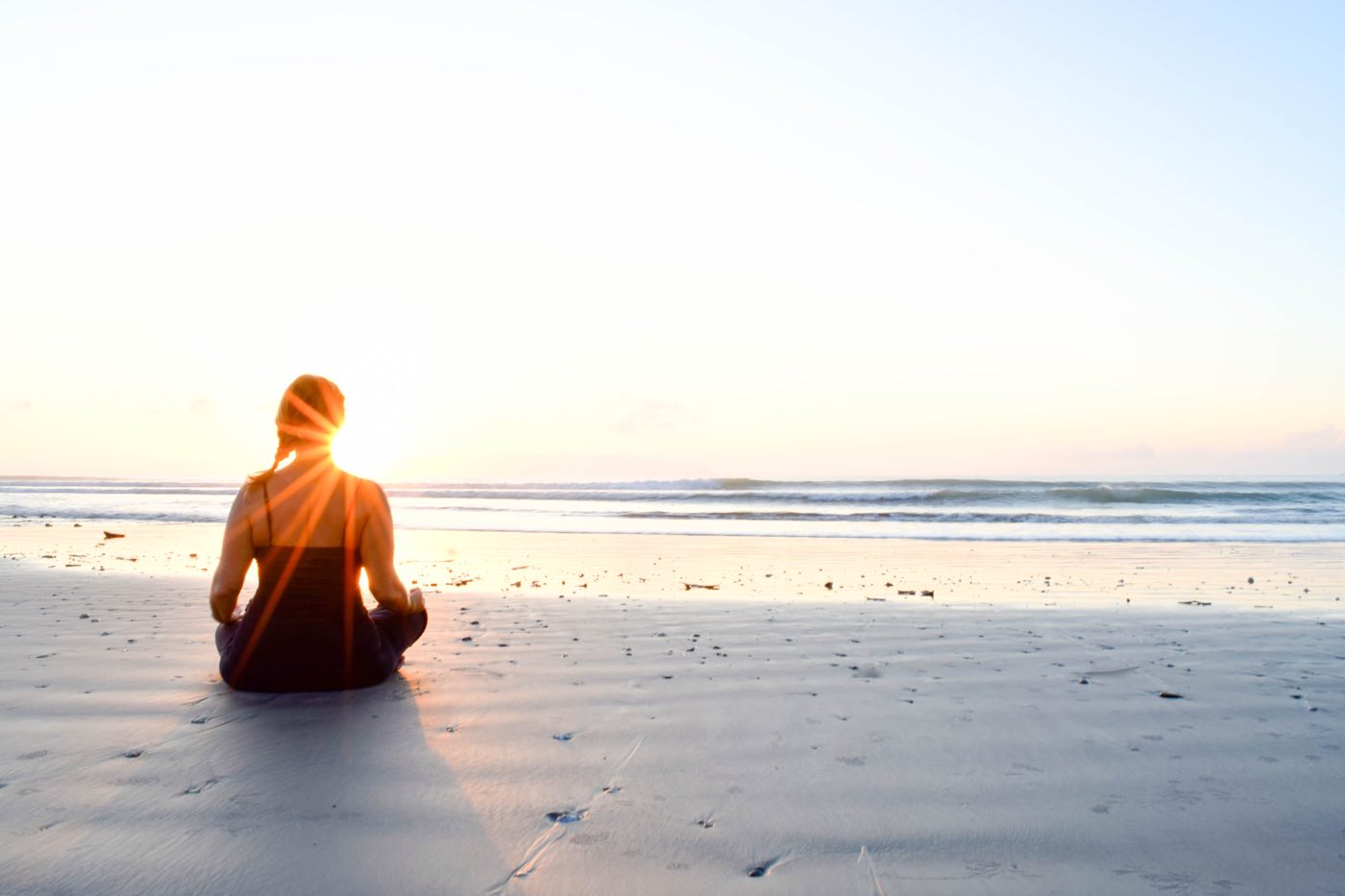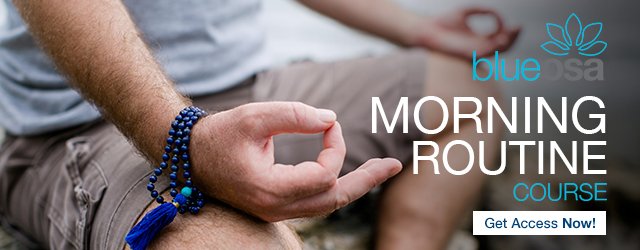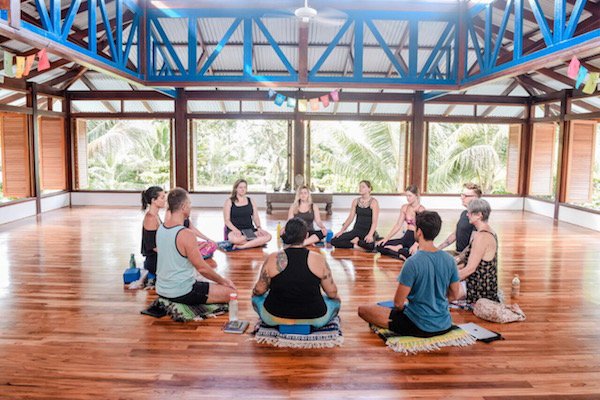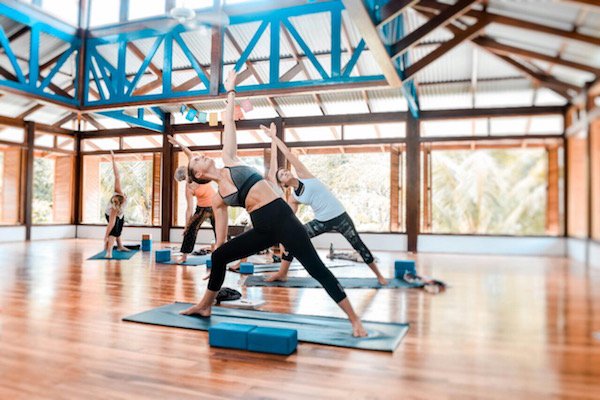Blue Osa’s Magic Hour Of Spiritual Awakening happens between the hours of 5 am and 7:30 am. The rest, as Yogi Aaron says, is all smoke in mirrors.
Everything in our morning practice has a purpose and a method, and we follow along without hesitating, questioning or interrupting. There is a powerful effect that comes from surrendering to a ritual and trusting the results. It instills a deep sense of faith.
It’s a devotional practice from the heart. Everyone during our morning ritual is present in unity but at the same time individually walking their own paths. A bonding experience to say the least and an all-encompassing unifying feeling shared by every participant, the morning ritual during the Blue Osa 300-hour yoga teacher training immersion is exclusive as much as it is otherworldly.
During the 300-hour yoga teacher training immersion at Blue Osa, we start our day at 4:55 am, as we all silently climb the stairs of the yoga studio with our flashlights.
We gather our props quietly and find a space, a different one each day, in our circle around the room.
We are all physically present, and yet each and every single one of us is drawing attention inward, in our own internal space.
We begin by invoking light and chanting the Gayatri Mantra.
Next, we become aware of our breath through a series of pranayama practices. Some balancing, some energizing, some heating. We are working with our energy, our prana, as we begin to uncover the power that resides in altering our breath flow and the effects it has on our minds.
As the sun rises and the waves outside are crashing on the beach, we set up for our relaxation practice. With all of our heads energetically connected inwards towards the center of the circle, we prepare to lie supine for one of the most quieting experiences of this ritual. An immersion into simply breathing, observing our rib cage rise and expand on our inhale, and lower on our exhale, and just be. Other than nature sounds, we only hear the words of our teacher skillfully leading us through the steps.
We focus on the script of this YogaNidra practice and let our bodies become supple and our minds relinquish control over the incessant river of thought. We are being guided in a safe and welcoming space, both internally and externally. There is nowhere to be and no one to see other than ourselves. We arrive into a state of deep relaxation, right at the edge between sleep and awakeness.
The deep relaxation prepares us for our meditation. Why do we meditate? So we can direct our mind to flow peacefully inward. When we regulate our minds we feel a deep sense of being home. Our meditation is composed of various stages, somewhere we specifically look at darker parts of ourselves we want to mitigate. We also get to chant our own personal mantra silently.
Last, we finish the practice by focusing on stillness. We practice specific asanas and use our breath as our ally. Our goal is to not identify with our thoughts, and realize that we are not our thoughts. Instead, we become friends with our minds. We begin an inner dialogue with our mind so that we recognize what is happening, and which thoughts are beneficial and those which aren’t.
We watch what emerges when we are faced with no external stimulation, no distraction, and the commitment we made to ourselves to stay and do the work.
We end this morning practice with a powerful chant and a bow, to symbolize the end of this sacred ritual and the start of our day. We all gather our props and walk away to reflect and journal while sipping tea in silence.










